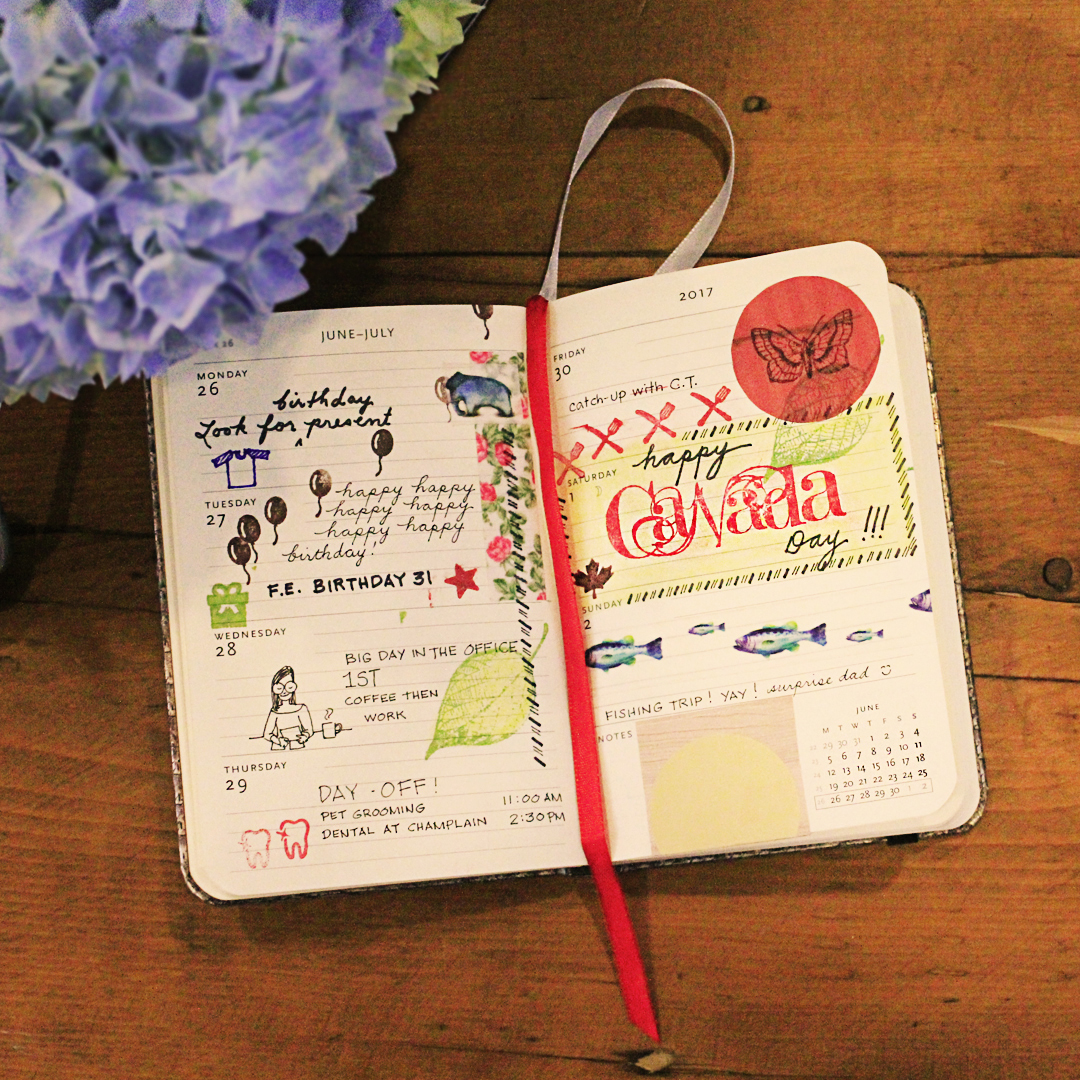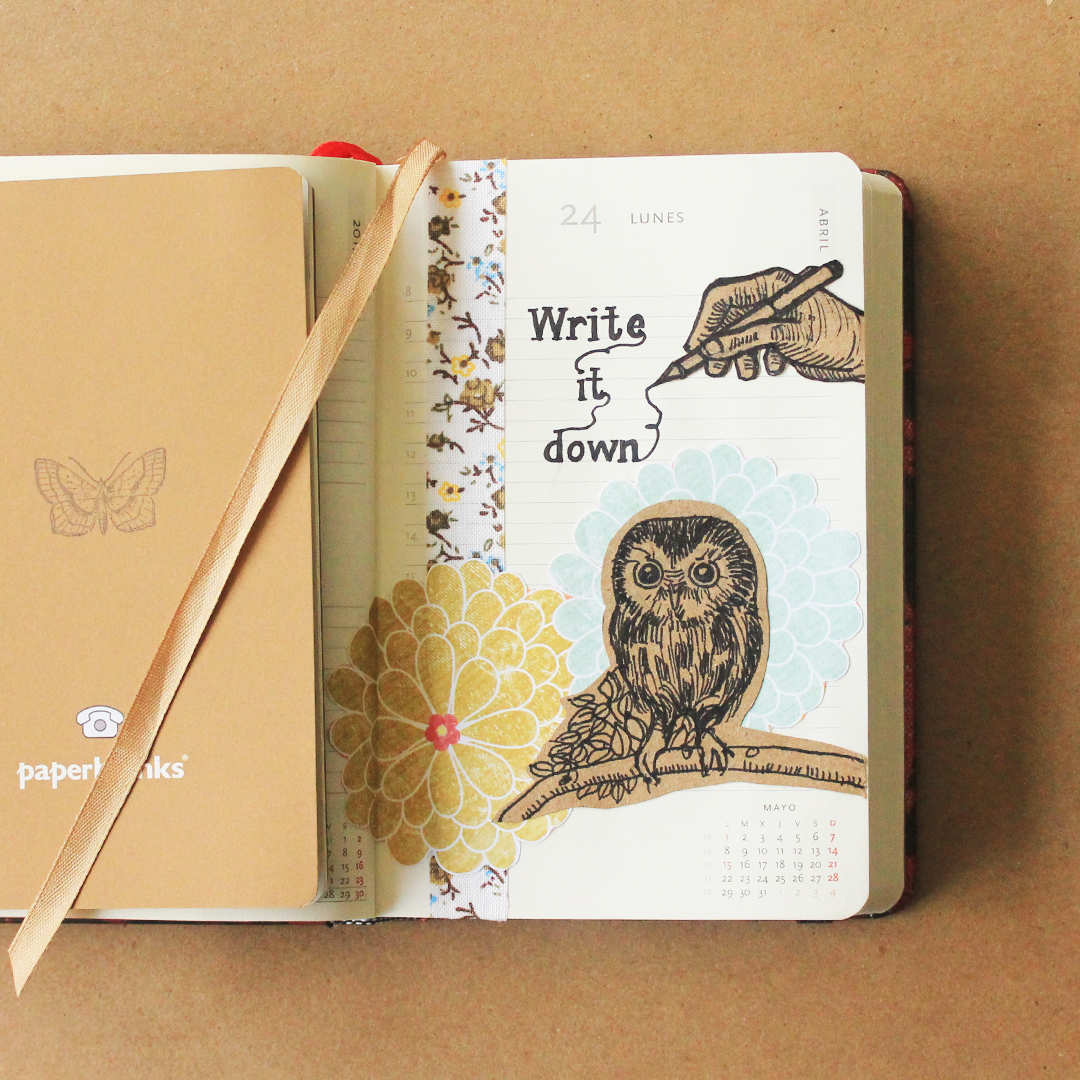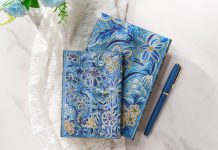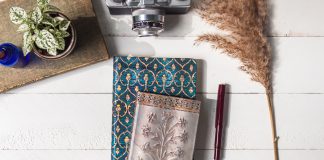With the rise of bullet journalling, combining personal writing with creative visuals has become an extremely popular form of keeping a diary. There are so many inspiring Instagrammers showing off their latest notebooks that it can feel intimidating to begin one of your own. But, just as with journal writing, art journalling is a personal expression and has no “right” or “wrong” way to do it.
If you are looking to create a more interesting-looking journal this year, try these six steps to get it started.
Begin with a Background
A blank page can be as intimidating to a visual artist as it is to a writer. Take an easy first step by selecting a background (e.g., pasted down tissue paper, a photograph or magazine cutout, watercolour design) or even a simple border. In doing so, you’ll be developing a colour scheme and overall theme, too. Once you have the background in place, you can decide what to add to it.
Develop Some Templates
Some people prefer to go with the flow and create in the moment. However, if you are new to art journalling or prefer a more structured approach, developing a few templates ahead of time can help. Think of some themes common to your journalling (e.g., daily reflections, quotes, goals) and work on a basic template for each. For example, you may find that a daily reflection entry calls for more drawings and symbols, while a goals page will be made up of decorative headers and bullet point lists. Of course, you’re not bound to these templates, but they can help you out whenever you’re unsure how to start a new page.
Invest in Stamps and Stickers
Think of these like the emojis of journalling! Sometimes a simple decorative touch can be enough to capture an entire idea. Stamps and stickers are helpful art journal tools because they come in a variety of shapes and styles and are relatively inexpensive supplies.
Start With Yourself
If you’re unsure where to begin, start with what you know best – yourself. Draw a self-portrait to start off a new journal, and see what you discover when you take away words and express yourself visually instead. You can also trace your hand and use it as a starting point to colour in with doodles, patterns or symbols.
Illustrate a Quote
Favourite quotes are popular journalling subjects because they offer a chance to express something that you feel without having to find the words. This concept works for art journalling, too. Take a quote that speaks to you and sketch it out. It could be a literal representation of what is being stated or a more symbolic depiction, and can also be combined with a written version of the quote.
Look Online for Inspiration
We never tire of seeing how creative people are with journals. Instagram is a great place to check out what fellow journallers are creating and an endless resource for inspiration. Check out some of our Peek Inside posts to get a sense of what you can do with your notebook!
For More
Check out this two-part series we did on how to “pretty up” your everyday journal:
About Paperblanks: 25 years ago, we created Paperblanks to help keep book heritage alive and vital in our modern age, and to offer an inspiring space for people to express themselves. Thanks for joining us on this journey! For more about Paperblanks, go to our website at paperblanks.com.







